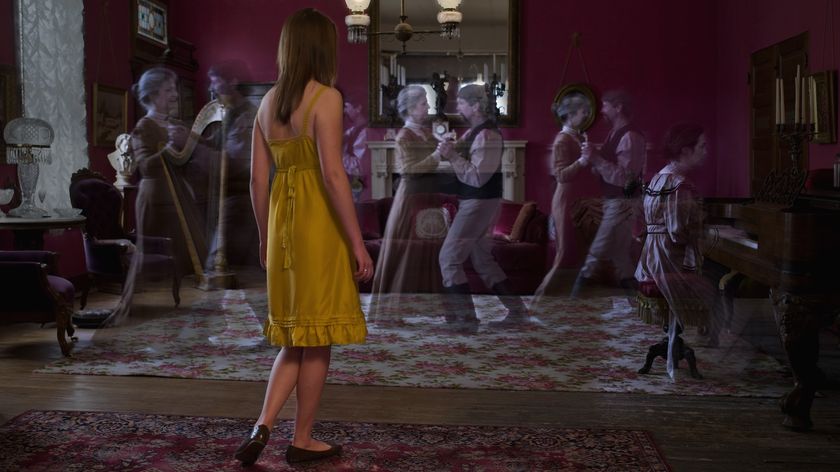
Why Some Urban Legends Go Viral

This article was originally published at The Conversation. The publication contributed the article to Live Science's Expert Voices: Op-Ed & Insights.
Urban legends get around, but we don’t really understand why. We conducted a study to explain how misinformation spreads surprisingly fast and why people feel compelled to share it.
There are many urban legends and often they can fill us with horror. You may well have heard the story about the two people who have cybersex only to realise months later, when they meet, that they are father and daughter.
Or what about the girl who keeps her heavily hair-sprayed beehive so high, never washing or taking it down, until one day she suddenly drops dead only for doctors to find that a poisonous spider had nested in her hair before biting and killing her?
Then there’s the story about the woman who hears a baby crying outside her house in the middle of the night. She calls the police, only to be warned not to open her door because a serial killer is luring women this way.
These examples are a form of contemporary folklore, which are told as true and set in post-industrial settings. They are passed on by word of mouth, through text messages, chain emails and Facebook posts, and in that process they evolve and thrive.
Some of them have even inspired horror films. Take the classic slasher Candyman, based on the widespread urban legend “Bloody Mary”, which says that calling out their name five times in the mirror makes the ghost-like figure appear.
Sign up for the Live Science daily newsletter now
Get the world’s most fascinating discoveries delivered straight to your inbox.
There have been others, such as the less successful Urban Legends film series. A number of websites, most notably snopes.com, are dedicated to their collection and analysis.
While many of us regard urban legends as just a bit of harmless fun, they can sometimes have negative consequences on individuals and communities, spreading fear and mistrust. For instance, a Chinese restaurant in Doncaster, recently faced bankruptcy after a local urban legend spread that a customer had choked on a microchip from a retired racing greyhound cooked up in a dish.
But what is it about urban legends that make them so culturally successful? In a paper recently published in the British Journal of Psychology, based on work I conducted at Durham University with Jamie Tehrani and Emma Flynn, we examined the idea that the success of urban legends can be explained by the way our brains evolved to learn, remember and transmit certain types of (mis)information more readily than others. Their success could be explained by two key biases in our cognition.
Our minds fall for simple biases
The first suggests that we evolved to notice and remember information about our environment that is important for our survival. The second suggests that we evolved greater intelligence in order to keep track of social interactions and relationships. These hypotheses suggest that we are evolved to be disposed to social and survival information, leaving us susceptible to notice, remember and pass on stories that contain this information, even if it does not reflect reality.
To examine how these cognitive biases might influence how urban legends are passed on from one person to another, our study used a design in the vein of “Chinese Whispers”, the children’s game in which information is passed from one child to another by whispering in their ears only once. By the time the information has reached the end child, it has invariably changed.
We gave participants urban legends that contained social information, survival information or a combination of both, who read and then wrote down these stories from memory. The product of their recall was given to the next participant and this process was repeated down the chain.
Another set of participants were presented with a number of “headlines” based on urban legends and asked which stories they would prefer to read. After reading each story they were asked which stories they would be more likely to pass on to another person.
People matter more than the environment
The study showed two things. First, people were attracted to stories that contained survival threats and social relationships. They were also likely to pass them both on to another person. Second, and this is more important, urban legends which contained social information, such as that in the cybersex legend, or combined survival information with social information, such as that in the baby-crying legend, were more successfully remembered than those that only involved survival information, such as that in the spider-in-the-hair legend.
This supports the theory that human intelligence and memory primarily evolved to deal with the challenges of living in large social groups with complex relationships, rather than dealing with the challenges posed by our environment, which is a commonly held view. They also help explain why urban legends can be found that involve both social interaction and survival threats.
We are attracted to both types of information and willing to pass both types of story on, but stories which contain social information live longer in our memory. It also helps to explain why so many stories – not just urban legends but also traditional folklore, novels, soap operas and internet memes – are about families, factions, friendships and fallings-out as well as death and disease.
Next, read this: As they spread, folktales evolve like biological species
Joe Stubbersfield does not work for, consult to, own shares in or receive funding from any company or organisation that would benefit from this article, and has no relevant affiliations.
This article was originally published on The Conversation. Read the original article. Follow all of the Expert Voices issues and debates — and become part of the discussion — on Facebook, Twitter and Google +. The views expressed are those of the author and do not necessarily reflect the views of the publisher. This version of the article was originally published on Live Science.












